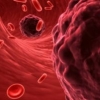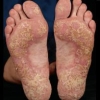Effetto della terapia laser a basso livello sul rilascio di interleuchina-6 e del fattore di crescita basico dei fibroblasti con concentrazioni normali ed alterate di glucosio
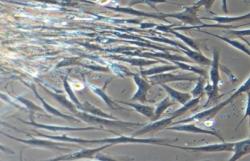 Introduzione: Questo studio ha valutato gli effetti della terapia laser a basso livello (LLLT) sui fibroblasti cutanei umani (HSFS) coltivati in terreni ad elevata concentrazione di glucosio.
Introduzione: Questo studio ha valutato gli effetti della terapia laser a basso livello (LLLT) sui fibroblasti cutanei umani (HSFS) coltivati in terreni ad elevata concentrazione di glucosio.
Gli HSFs sono stati coltivati in un mezzo a condizioni fisiologiche di glucosio, e poi sono stati coltivati in un terreno con alta concentrazione di glucosio (15 mM/L) per 1 o 2 settimane prima della LLLT. Gli HSFs sperimentali sono stati irradiati con tre densità di energia (0.5, 1, and 2 J/cm2) una volta al giorno e per tre giorni consecutivi. Utilizzando il saggio immuno-assorbente legato all'enzima (ELISA), è stato valutato il rilascio di interleuchina-6 (IL-6) e del fattore di crescita basico dei fibroblasti (bFGF).
Risultati:
L'analisi statistica ha mostrato che le tre dosi di 0.5 (p = 0.049), 1 (p = 0.027), e 2 J/cm2 (p = 0.004) hanno stimolato il rilascio di IL-6 negli HSFs coltivati in presenza di alte concentrazioni di glucosio, rispetto agli HSFs non-irradiati ma coltivati ugualmente nelle stesso terreno. La LLLT con 2 J/cm2 ha indotto il rilascio di bFGF dagli HSFs coltivati nel mezzo ad alta concentrazione di glucosio per 1 o 2 settimane (entrambi p = 0.04).
Conclusioni:
Pertanto, il nostro studio ha dimostrato che LLLT stimola il rilascio di IL-6 e di bFGF da parte degli HSFs coltivati in terreni con alta concentrazione di glucosio. LLLT è stata più efficace nel liberare IL-6 e bFGF dagli HSFs che erano stati coltivati a concentrazioni fisiologiche di glucosio durante l'irraggiamento laser.
Storia della pubblicazione:
Titolo: Effect of low-level laser therapy on the release of interleukin-6 and basic fibroblast growth factor from cultured human skin fibroblasts in normal and high glucose mediums
Rivista: Journal of Cosmetic and Laser Therapy. doi:10.3109/14764172.2013.803366
Autori: Mohammad Esmaeelinejad e Mohammad Bayat
Affiliazioni:Oral and Maxillofacial Surgery Department, Dental Faculty, Shahid Beheshti University of Medical Sciences, Tehran, Iran Cellular and Molecular Biology Research Center, Shahid Beheshti University of Medical Sciences, Tehran, Iran
Abstract:
Introduction: This study evaluated the effects of low-level laser therapy (LLLT) on human skin fibroblasts (HSFs) that have been cultured in high glucose concentration media. Materials and methods: HSFs were cultured under physiological glucose condition medium, and then cultured in high glucose concentration medium (15 mM/L) for 1 or 2 weeks prior to LLLT. Experimental HSFs were irradiated with three energy densities (0.5, 1, and 2 J/cm2) once daily for three consecutive days. Release of interleukin-6 (IL-6) and basic fibroblast growth factor (bFGF) was evaluated using the enzyme-linked immunosorbent assay (ELISA) method. Results: Statistical analysis showed three doses of 0.5 (p = 0.049), 1 (p = 0.027), and 2 J/cm2 (p = 0.004) stimulated the release of IL-6 in HSFs cultured in high glucose concentration medium compared with that of non-irradiated HSFs that were cultured in the same medium. LLLT with 2 J/cm2 induced the release of bFGF from HSFs cultured in high glucose concentration medium for 1 or 2 weeks (both p = 0.04). Conclusion: Our study showed that LLLT stimulated the release of IL-6 and bFGF from HSFs cultured in high glucose concentration medium. LLLT was more effective in releasing IL-6 and bFGF while HSFs which were cultured in physiologic glucose concentration medium during laser irradiation.
https://www.youtube.com/@djfdm
